Ultra-Premium Cognacs Are The Latest Collectibles
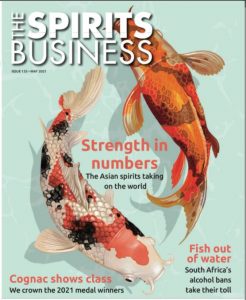 Regular readers of our Blog will know that we have often compared the astronomical prices of aged and vintage whiskies to the far more modest cognac equivalents, but there are signs that this could be about to change. Owen Bellwood, writing for The Spirits Business, has been investigating the latest trends in the cognac market and has published his findings here, on page 26. Perhaps whisky is pricing itself out of the market, and collectors are looking further afield for their investments, but we have recently seen a rapid increase in the demand for ultra-premium pre-1900 cognacs. This includes those that were produced in the pre-Phylloxera era and those that have been in cask for many decades.
Regular readers of our Blog will know that we have often compared the astronomical prices of aged and vintage whiskies to the far more modest cognac equivalents, but there are signs that this could be about to change. Owen Bellwood, writing for The Spirits Business, has been investigating the latest trends in the cognac market and has published his findings here, on page 26. Perhaps whisky is pricing itself out of the market, and collectors are looking further afield for their investments, but we have recently seen a rapid increase in the demand for ultra-premium pre-1900 cognacs. This includes those that were produced in the pre-Phylloxera era and those that have been in cask for many decades.
We have been aware of the changing direction of the cognac market for a number of years and in part, it has given rise to our Hermitage Paradis Cognacs range. The MD, David Baker, is quoted in The Spirits Business magazine on page 30 as believing that spirits produced by masters of their craft, in creative ways, can become some of the best examples available. The vintage he cites is the Hermitage 1885 which is “out of this world”.

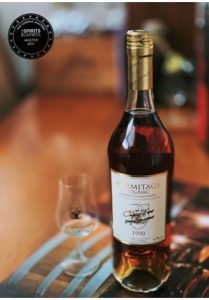 The Cognac Masters 2021 results have just been announced and we are thrilled to report that our new
The Cognac Masters 2021 results have just been announced and we are thrilled to report that our new 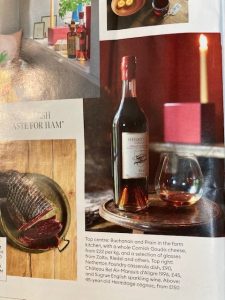
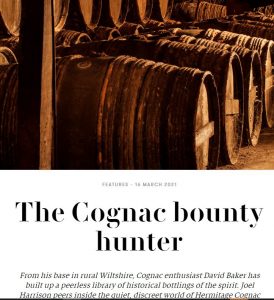
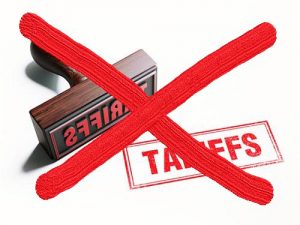 We are delighted to inform you that, the United States of America has suspended the 25% Tariff on imported
We are delighted to inform you that, the United States of America has suspended the 25% Tariff on imported 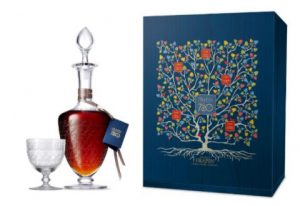 Frapin has just released a limited edition run of this unique presentation to celebrate 750 years since the family’s oldest member was born in Cognac in 1270. We do applaud these small family firms who have passed on their skills from generation to generation and not taken the easy route of selling to the ‘big four’. The Frapin 750 contains some very old Grande Champagne eau de vie, albeit blended, and is presented in a Baccarat crystal carafe decorated with Belle Epoch-like grapevine etchings. Just 21 of these presentations have been produced – to represent the 21 generations of the Frapin family – now that really is history in a bottle. It oozes quality and style but so does the price tag. One of these will set you back an astounding £43,956. That’s equivalent to 25 of our
Frapin has just released a limited edition run of this unique presentation to celebrate 750 years since the family’s oldest member was born in Cognac in 1270. We do applaud these small family firms who have passed on their skills from generation to generation and not taken the easy route of selling to the ‘big four’. The Frapin 750 contains some very old Grande Champagne eau de vie, albeit blended, and is presented in a Baccarat crystal carafe decorated with Belle Epoch-like grapevine etchings. Just 21 of these presentations have been produced – to represent the 21 generations of the Frapin family – now that really is history in a bottle. It oozes quality and style but so does the price tag. One of these will set you back an astounding £43,956. That’s equivalent to 25 of our 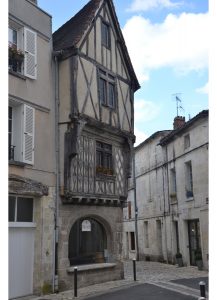 The Cognac region of The Charente and Charente Maritime has always been a popular tourist destination as it enjoys a warm, hospitable climate that borders the Atlantic Ocean. Maybe not all visitors are aware of its long, fascinating history as the producer of the King of Brandies but that is, hopefully, about to change. The Bureau National Interprofessionnel du Cognac (BNIC), Cognac’s regulatory body, has launched a project for local producers, restauranteurs, leisure professionals, coopers and hoteliers to make the appellation more accessible when travel and tourism open up again. By offering a wider range of visitor experiences, it hopes to promote Cognac as a unique tourist destination. The General Director of the BNIC said “Visiting the region is a great way to meet the women and men who daily work in the vineyards, distilleries or cellars to create this wonderful product. Their expertise is part of the French cultural heritage we are proud of.” He is hoping that this focus on tourism will attract new drinkers to the spirit,
The Cognac region of The Charente and Charente Maritime has always been a popular tourist destination as it enjoys a warm, hospitable climate that borders the Atlantic Ocean. Maybe not all visitors are aware of its long, fascinating history as the producer of the King of Brandies but that is, hopefully, about to change. The Bureau National Interprofessionnel du Cognac (BNIC), Cognac’s regulatory body, has launched a project for local producers, restauranteurs, leisure professionals, coopers and hoteliers to make the appellation more accessible when travel and tourism open up again. By offering a wider range of visitor experiences, it hopes to promote Cognac as a unique tourist destination. The General Director of the BNIC said “Visiting the region is a great way to meet the women and men who daily work in the vineyards, distilleries or cellars to create this wonderful product. Their expertise is part of the French cultural heritage we are proud of.” He is hoping that this focus on tourism will attract new drinkers to the spirit, 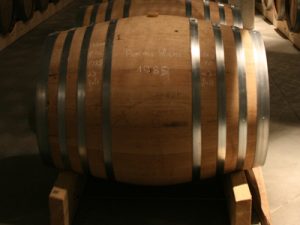 Single Cask is a term well known in the whisky industry, it certainly gives a product increased status and price but why is that? The phrase Single Cask suggests a unique glimpse into a particular set of circumstances that has given rise to a one-off personality. The whisky may be from a certain year where the distillery was using a particular mashing regime, yeast strain or set of stills. It may have been stored in a warehouse that is known to provide certain conditions. The barrel itself is unique as no two trees are identical and coopers’ techniques differ, so the flavours that develop will be only found in that cask. Every distillery has its official range of bottlings which are created to please as many people as possible, but a Single Cask captures the stage before the identity is lost in the blend. For distillery fans, this takes their experience a step further. Rarity imparts value and so a Single Cask will be highly sought after.
Single Cask is a term well known in the whisky industry, it certainly gives a product increased status and price but why is that? The phrase Single Cask suggests a unique glimpse into a particular set of circumstances that has given rise to a one-off personality. The whisky may be from a certain year where the distillery was using a particular mashing regime, yeast strain or set of stills. It may have been stored in a warehouse that is known to provide certain conditions. The barrel itself is unique as no two trees are identical and coopers’ techniques differ, so the flavours that develop will be only found in that cask. Every distillery has its official range of bottlings which are created to please as many people as possible, but a Single Cask captures the stage before the identity is lost in the blend. For distillery fans, this takes their experience a step further. Rarity imparts value and so a Single Cask will be highly sought after. Apart from the recent flooding of the Charente, there is very little news from the Cognac region this winter 2021 as France went into a second national lockdown from October to December 2020. It had hoped to reopen cinemas, museums and theatres in January, followed by bars, restaurants, gyms and cafés later in the month but now, this will not be possible until mid-February at the earliest. A partial closure of the border with the UK will remain in place until further notice with second-home owners, tourists and those visiting family all barred. The country remains under an 8pm – 6am curfew but an earlier 6pm to 6am curfew – already in place in parts of Eastern France (see map) – is set to be extended to other areas. Although France is doing better than some of its neighbours, the number of Covid patients remains high.
Apart from the recent flooding of the Charente, there is very little news from the Cognac region this winter 2021 as France went into a second national lockdown from October to December 2020. It had hoped to reopen cinemas, museums and theatres in January, followed by bars, restaurants, gyms and cafés later in the month but now, this will not be possible until mid-February at the earliest. A partial closure of the border with the UK will remain in place until further notice with second-home owners, tourists and those visiting family all barred. The country remains under an 8pm – 6am curfew but an earlier 6pm to 6am curfew – already in place in parts of Eastern France (see map) – is set to be extended to other areas. Although France is doing better than some of its neighbours, the number of Covid patients remains high.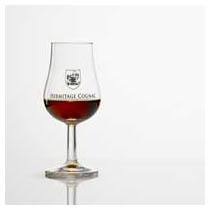 The digestif is an alcoholic drink served after dinner to aid digestion. So, one may ask, does it? Well yes it does. I guess that you would expect me to say this as
The digestif is an alcoholic drink served after dinner to aid digestion. So, one may ask, does it? Well yes it does. I guess that you would expect me to say this as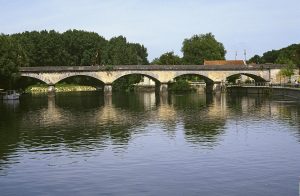 Once again at this time of the year we turn our attention to the harvest, the quality and size of this year’s crop. During a visit to the Charente a couple of months ago, in Autumn 2020, I was able to see the vineyards for myself and make a judgement as to the size of the potential harvest. Even then it was apparent that it was going to be big, providing the rain came at the right time. Well, the rain did come, not quite at the right time but enough to produce a substantial harvest. Although we do not have the final quantity yet, figures of around one million hectolitres of pure alcohol are being talked about. That is around 365 million bottles of
Once again at this time of the year we turn our attention to the harvest, the quality and size of this year’s crop. During a visit to the Charente a couple of months ago, in Autumn 2020, I was able to see the vineyards for myself and make a judgement as to the size of the potential harvest. Even then it was apparent that it was going to be big, providing the rain came at the right time. Well, the rain did come, not quite at the right time but enough to produce a substantial harvest. Although we do not have the final quantity yet, figures of around one million hectolitres of pure alcohol are being talked about. That is around 365 million bottles of